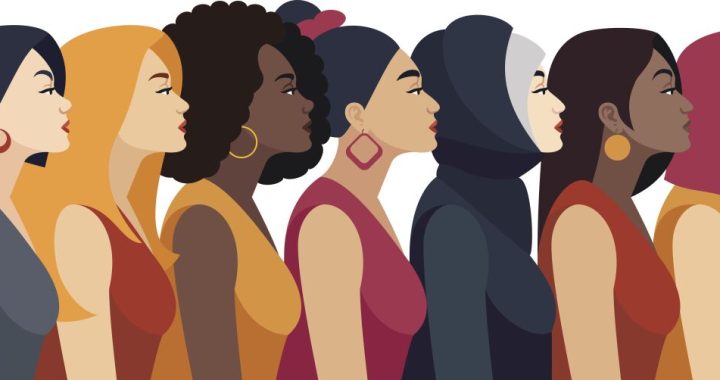New Eyes
They say that the natives on the shore of the Atlantic Ocean never saw Columbus’s boats coming, because they had never learned to recognize the four-mast ships, let alone imagine one previously.
Now, look here: I am in a new country, surrounded by a new culture, equipped only with what I know, and in serious need of new eyes. So far, my personal experience in Romania has given me example after example of being unable to recognize even the most basic underlying rules lying in plain sight, simply because I have never encountered them before.
This happens to anyone who travels for business, for pleasure, or otherwise. Faux pas become your signature move. And locals get a kick out of your blunder, or feel completely confused by them, sometimes even offended. Apropos of writing this post: in business, a social misstep can become your greatest mistake.
Stereotypical questions: Why are my Brazilian associates always late? Why is my Russian coworker my harshest critic? Why doesn’t my team in India respond? Why aren’t my Chinese clients buying? (Tip: notice who asks the questions.)
A recent personal example. Without thinking about it, I used to raise my hand to greet a new acquaintance in Romania with a firm shake. This would be followed by a tense awkward stare from the Romanian, before they spoke, “Oh, hello,” in English. When eventually I realized I wanted to greet and to be greeted in Romanian, I figured, fine, I will use my Argentine style hello instead, we’re all Latin here, here you kiss. So, I started going for the cheek. But, to no luck. The problem was that now I would go left, while everyone here first went right, then left for an unexpected second kiss. At least with the handshake we were both spared the breath of the awkwardness. But now, sharing one another’s personal space, we could smell it straight from our oh so close noses.
It took a few fails to notice what was wrong with my approach, even to notice how the locals did it. In casual settings: a kiss to the right, then a kiss to the left. In a business setting: a handshake is fine, but you can always tell when next time they would prefer a hug. And there’s more. There are different styles between men and women. The more you stare, you know, the more complicated it gets. That’s culture. Both a challenge and a broadening of the mind.
At the core, I think most would agree that what’s obvious about one’s own culture is utterly opaque to others, sometimes even to ourselves within the culture. Additionally, I’ve discovered that there are somethings that I will never learn on my own about Romania or other cultures, no matter how hard I applied myself, or stared. That’s because learning the culture, like learning a language, requires not only direct exposure, but formal analysis.
Seeing Culture
Erin Meyer’s book, The Culture Map, is that formal analysis. The author takes her 16 years of international business research and drafts one central thesis: when you invest in understanding the communication, leadership, and trust-building styles of your own culture, and then those of the ones you propose to work with in harmony, then your business thrives.
The styles, according to the author, comprise eight various spectrums, each culture forming a line, or a map, down each spectrum.
Those styles are in:
- Communication (Low-context vs high-context)
- Evaluating (Direct negative feedback vs Indirect)
- Persuading (Principles-first vs Application-first)
- Leading (Egalitarian vs Hierarchical)
- Deciding (Consensual vs Top-down)
- Trusting (Task-based vs Relationship-based)
- Disagreeing (Confrontational vs Conflict Averse)
- Scheduling (Linear-time vs Flexible-time)
At a glance, you could assume that whole cultures are fully on the high or low end of each spectrum. Sometimes this is true, like the business culture in China, which is on the very right of each spectrum extreme. But most times, and with most world cultures, their line will zigzag down either side, being subtle or wordy when writing an email, but rather blunt when disagreeing in a board meeting, like in French culture. Other times the corporate structure might be highly hierarchical, yet painfully democratic when reaching a company decision, as it is in Japan.
Demonstrating a grasp of these surface inconsistencies is just one reason why this book is so brilliant.
Another brilliant note has to do with the relative positions of two cultures on the spectrum. Consider how in America the French can seem slack for being 15 minutes late to a meeting, whereas to Indian businessmen the French appear zealous in their day to day inflexibility. Remember those four questions above, the ones about the BRIC countries? Whether you have pondered those or thought the complete opposite says a lot about your own culture. Maybe your culture finds time even more flexible than the Brazilians; your manner of delivering constructive criticism even more barefaced than the Russians; and so on.
Overall, the biggest personal take away I got relates to the distinctive behavior of my Japanese students in my classrooms, as an English teacher in New York. There, I had the pleasure of working with folks from all over the world. While the extroverted and fun-loving Dominicans were a blast, for example, I have always wondered why my Japanese students were so quiet in comparison. I chalked it up to something simple, an assumption: Asians must be naturally introverted. However, something else was at play here. Something almost hidden. (Culture.) If you are patient, then I might tell you that story and what I learned, but later.
Squinting to Understand
For now, let us put aside the little epiphanies from the book to give a few specific examples of the broad range of human interaction and responses. I’ll only look at three, Communication, Leading, and Trusting, since those are the ones that interest me the most; plus this post would become drearily long otherwise.
Note, the “why” a culture is the way it is belongs to the historians and sociologists. Those departments can point to what environmental factors conditioned different groups of people to respond in different, yet consistent ways.
As in, the first point, Communication.
When your country experiences decades of high immigration rates, your cities develop a style of speech that seeks to reduce confusion, to link various people together, but in simple terms. This is what Meyer calls low-context communication, such as the United States values, where the virtues are as common as cliché: “less-is-more,” “get to the point,” and “say what you mean and mean what you say.”
To posit an opposite case, that of high-context culture, imagine a homogeneous country, one that has been isolated for thousands of years, developing multi-faceted cultural references, or multiple levels of meanings per word as a result of heavy diplomacy or war. Japan comes to mind, India comes to mind, even France are all countries where subtlety of speech reigns supreme. Advice from my grandmother, who traveled to high-context cultures, comes to mind: “No means no, and Yes means maybe.” Would your culture agree or disagree with this statement? Maybe it is more of a “Say what you mean and mean what you say” kind of culture? Or perhaps, quite counter-intuitively to one person yet obvious to another, it believes: “Yes means absolutely, and No means ask again.”
The second point to consider is Leading.
The two extremes are egalitarian (think of the way corn is planted in a field, every seed equally spaced), and hierarchical (think of a pyramid, where a large base supports the small top, although it is the top that gives the whole structure its shape). To thrive in an egalitarian culture, it is necessary to see yourself as just like everybody else. People in egalitarian cultures do this unconsciously most of the time, for example a boss might take a bike to work, and think he is being environmentally-conscious, when really the only sensible thing to do is travel as his employees do. In hierarchical cultures, by contrast, bosses drive luxury vehicles, and people communicate only with direct superiors or subordinates. If a boss didn’t, or fraternized with the interns, this could be taken as a sign of company decay. Want to laugh? Take one employee from one culture, place him in another, and everyone’s wires get crossed.
To give two examples, the book first tells of an Israeli manager who was transferred to a recently acquired Russian factory. The Israeli had found success back home as “one of the guys” and he thought he could do the same in another culture. At first things went well, but as the months rolled by his Russian employees lost respect for their casually dressed, casual talking boss. What he learned the hard way was that Russia is a hierarchically structured culture, one which demands authority to provide shape to the organization it leads. A few minor adjustments to his style and the Israeli turned the situation around. The same thing happened, but in reverse, when a Mexican manager was brought into the Heineken headquarters in Amsterdam. Back home he could expect respect from his team. But in the Netherlands all bets were off. It took time to adapt to his subordinates grabbing coffee with his superiors, to seeing everyone dressed the same, to having his opinion challenged to his face. His solution, in the end, was to adjust, ease a little on the reins, and parley with his cohort, which produced more empathy, better results and, funny enough, less talk back. He became one of the guys.
The third and final point, my favorite to think about, is Trusting.
Understanding the different poles is as easy as understanding the difference between a peach and a coconut. As Meyer puts it, peach cultures are easy going, fun loving, and soft on the outside, yet with an impenetrable inside. Think of meeting new people in the United States, or in Brazil, or India. On the opposite end, think of what it is like to meet Russians, Germans, or Chinese folk for the first time. These are the coconut cultures, which though hard on the outside, overtime become some of the warmest and closest friends you could possibly have, unlike, say, the American, who might never tell you his salary, who he voted for, or ever listen to anything negative you have to say about his mama, unless it’s a fight you want.
Task-based cultures, peaches, prefer to keep work and personal life separated when at the office. If there is gossip or grabbing beers, then it is purely for fun and not a means to a business end. Relationship-based cultures, in contrast, build connections with coworkers, clients, supervisors, or employees in the same way you would build a relationship with a friend. For them, “business is relationships,” as Meyer discovered. Seen this way, broadly, and with each extreme styles side by side, not head to head, to its opposite, then we start to see both approaches as different ways of approaching the same problem: how can I trust this person won’t screw me over? How can I trust this person will deliver? For some they keep their business and friends separate, for others you only do business with friends.
Blinking Awake
Because The Culture Map is not a book that would normally have landed on my desk, how it did is a story full of culture itself.
Lately, I’ve been visiting one of the largest language agencies in Romania. They offered me a job recently, which, naturally, came with much excitement and curiosity, but also with some questions and obstacles. Visa issues aside, when I alluded to my difficulties in understanding Romanian culture, the co-founder of the company lent me her copy of The Culture Map, saying it would be a good start.
Some 270 pages later, I can say it was an exciting read, and powerful too, one that challenged some of my oldest assumptions. For example, I recontextualized the more “boring” behavior of my American friends’. They are not boring, just Hollywood straight-forward. I reframed my Argentine family members’ apparent “chaotic” communication style as something dynamic and engaging. They can make you laugh, cry, doubt or feel proud about being Argentino, all in a few choice words.
Romania, leaps and bounds different from where I’m from, yet in other ways symmetrically identical, I also see with new eyes. Though I need more time and more conversations and more exposure and formal study, there are some small conclusions to draw from my time here, of course in conjunction with what I learned from the book.
The communication style here is very much low-context. Perhaps this has something to do with the history of being a Latin culture surrounded by Slavic ones; and a country positioned, seemly, always between imposing world powers. To be clear and direct becomes, in this context, an obvious solution.
The leadership style, taking cue from its communist past, and influence from nearby authoritarian powers, grew to be rather hierarchical. We remember Ceausescu. We remember Decebalus and other great kings of old.
Last, and this I see with my own eyes at the company, this country is highly relationship-first. The coworkers share photos of their weekend trips, make jokes about themselves, remember each other’s dogs’ names, and are very, very, to put it simply, all very friendly. And still getting work done! It’s incredible. Compared to them, my professional and well-spoken colleagues back home would appear, in poor light, as just plain stiff.
Closing to rest the eyes
What is culture? One story from the book calls it the water fish swim in, breathe, but cannot see. “One day, an old fish passed by two younger fish. He said, ‘Good day, boys. How’s the water?’ Without answering the old fish, the two younger ones looked at one another and wondered, ‘What the hell is water?’ They had never seen it before.”
A more formal description of culture can be found among the pages of one of business’s most highly regarded social researchers, Professor Geert Hofstede. He called culture, “The collective programming of the mind, which distinguishes the members of one group or category of people from others.” For fish, the collective programming that powers their lungs is the invisible water. For any land creature, it is air and wind.
Yet for people, it is the little things we picked up growing up, from our parents, siblings, classmates, teachers and coaches, television, you name it, the society we grew up in and swim every day.
To conclude, I’d like to share with you a specific time culture became identity for me.
It was 8th grade history class. The teacher asked us all to go outside. Obviously, we were happy to, though a little suspicious. Once there, however, she asked us all, rather strangely, to line up from shortest to tallest. I sided with the runts of the litter, I was super short back in the day. Next, she divided the class into thirds. She said, “The tallest and strongest students will be Great Britain in 1776. The middle students will be France, and you short boys and girls will be, I’m sorry, the United States.” There was already a rope lying in the grass, representing the American war of independence, made manifest in as classic game of tug of war. Who do you think won? The tall Brits were on one side and the Americans were on the other. For some ten to twenty brutal seconds, the bigger boys and girls tugged at the rope like it were toilet paper on a roll. Us smaller and weaker shrimps didn’t stand a chance. Then, with a godly roar, the history teacher shouted, “Now it’s 1778, and France signs an alliance with the Americans! Go, my French soldiers, help the Americans win the revolutionary war!” It was fantastic. All at once, our number of troops doubled, were united, and we defeated the British aggressors, freeing America from its imperial bind! I mean, we won the tug of war game.
A lesson none of us ever forgot, this became one out of many, many, many such moments growing up any American could cite as the source of the core-est of the core values in our country: “United we stand, divided we fall.” That no matter how small you are, no matter how weak, you can always band with the people around you to form a more perfect union, a sum greater than its parts.
Here I tip my head to Erin Meyer’s excellent perspective at how people across different cultures think and multinational companies thrive. I never would have remembered this lesson had not then author repeatedly sprinkled that “United we stand” quote throughout the book.
And, yo, what about the Japanese students in my class? What I realized?
In writing this post I realized I won’t tell you. The tug of war example was too low-context, even for me. I’ll let that important life lesson remain in the high-context ether, for you to guess. Trust me, it’s between the lines.
Need a tip? Read the book! Or watch Mrs Meyer speak here:
You’ll figure it out?




